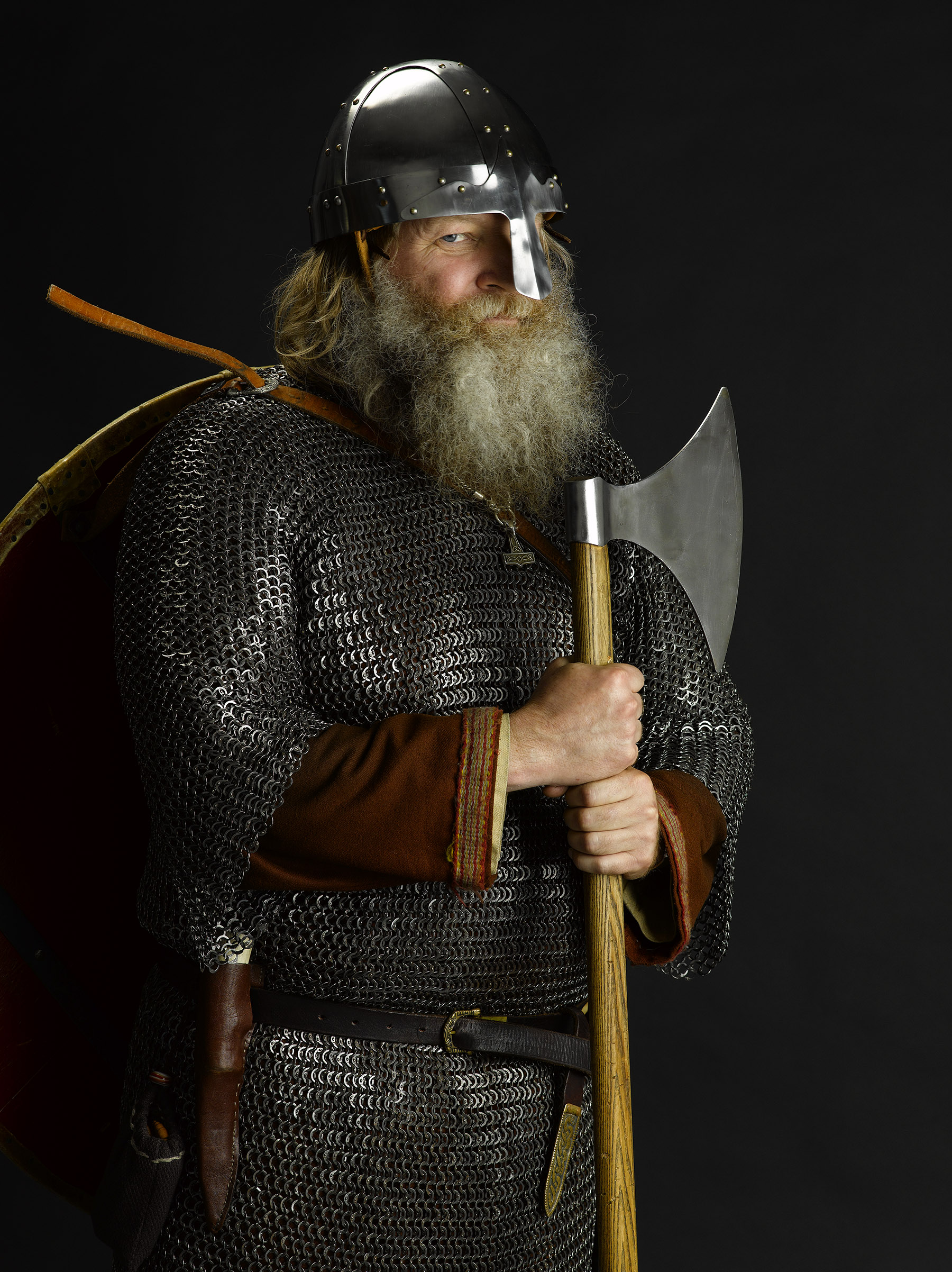At the 2018 Viking Days held at the Museum, William R. Short was scheduled for a one-hour lecture on Saturday morning, and again on Sunday morning. Seating capacity in the lecture room was about 65. It filled up 20 minutes before the lecture was scheduled to start and we had to turn away dozens of disappointed people.

Well, don’t say you can’t teach an old Museum a new trick. For this year’s Viking Days (June 1-2), we have Dr. Short scheduled for TWO lectures on Saturday and TWO lectures on Sunday and we have moved the talks to the Greenmanville Church, which has a much larger capacity.
Short is an author, filmmaker, lecturer, and independent scholar specializing in Viking-age topics, notably medieval Icelandic literature, Viking-age material culture, Viking-age weapons, and Viking-age combat techniques. He is the manager of Hurstwic, LLC, an organization that researches, practices, teaches, and demonstrates the fighting moves of Viking-age warriors at their training and research facility in Millbury, MA. He took a few minutes to answer five questions for us.
1. Where did your interest in Viking history and culture first begin?
Short: It started when I discovered the Sagas of Icelanders, the stories of Viking-age Iceland, and the interest was firmly cemented when I took a summer course in the sagas at the University of Iceland.
2. How do explain the current modern-day fascination with Viking and Norse culture?
Short: I cannot. Popular entertainment paints a fantasy portrait of these people, but the actualities are far more adventuresome, bold, and exciting.
3. Your lecture topics this year are: “The Viking Belief in the Afterlife”; “The Making of Iron in the Viking Age”, and “Trolls and Zombies: The Paranormal Creatures that Inhabit the World of the Vikings.” Can you give me a bumper-sticker sized description of each talk?
Short: “Viking-Age Iron: Making and Trading, Using and Sacrificing”: Iron was difficult to make in the Viking age, and thus precious, yet it was essential for life. The evidence of Viking-age iron-making in Newfoundland is a sure sign that Vikings crossed the Atlantic to visit and to repair their ships there. How did Viking-age people make and use iron, and what special significance did this magical material have to these people?
“Ghosts, Zombies, and Trolls in the Viking Age”: The sagas tell tales of everyday people in the Viking age, but the saga
landscape is also populated by ghosts, zombies, trolls, and sorcerers. What did it mean to be a troll? These beliefs in zombies and magic shed new light on aspects of the ancient northern religion and Viking society, and they still reverberate today in modern-day Iceland.
“Viking-Age Beliefs in the Afterlife”: If you lived in the Viking age, and a loved one died, what did you expect would happen to him or her? To the body? And to the essence of the person, the part of them that lives on after death? This presentation discusses what is known about these Viking-age beliefs.
4. Whats the biggest misconception people have these days about Viking culture?
Short: Sorry, it’s hard to answer. Most people have no idea of the mindset of the Viking people: the unwritten rules carried in their hearts that guided their behavior. And so they have an expectation of how these people behaved
that probably differs from what really happened.
5. Whats your favorite aspect of Viking culture?
Short: They were fabulous story-tellers and poets, and their stories and poems continue to fascinate and entertain today.



